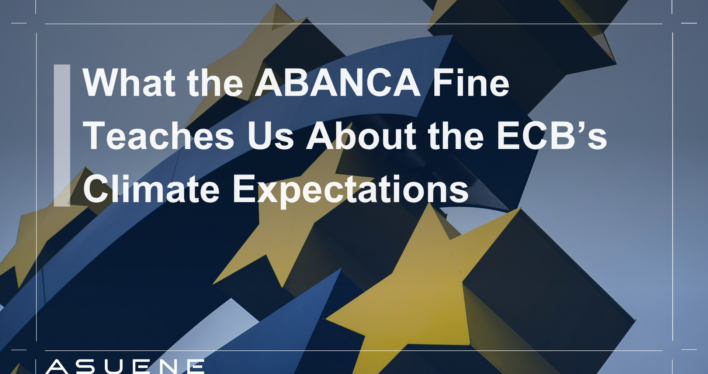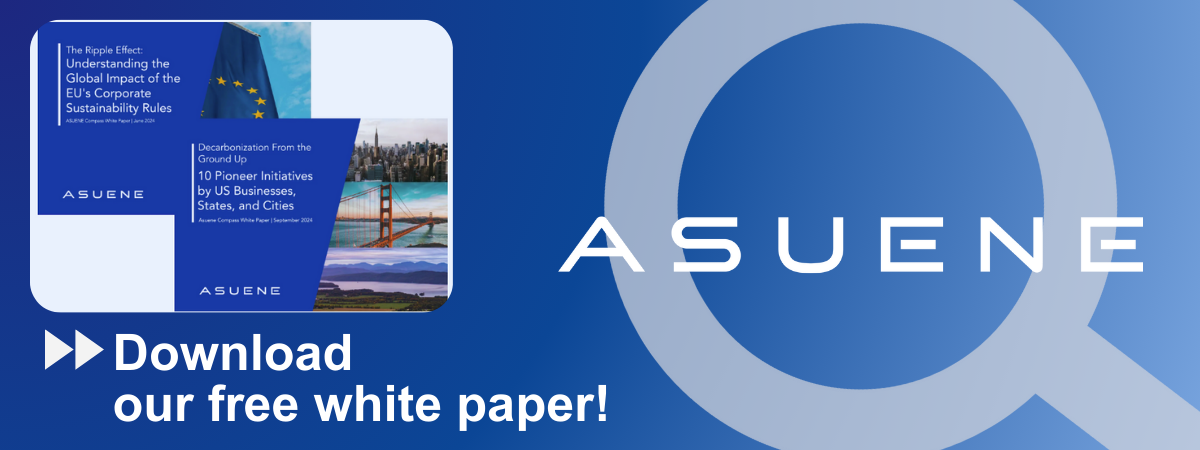- Article Summary
-
Introduction: The Fine That Marked a Turning Point
When Spain’s ABANCA became the first bank fined for climate risk failures, it confirmed a shift many had anticipated. The European Central Bank (ECB) announced a €187,650 penalty after the Spanish lender failed to meet its obligation to identify and assess material climate and environmental risks. The fine may be modest in amount, but it carries significant weight. It demonstrates that climate risk management has moved from guidance to enforceable supervision. This marks a critical stage in the ECB’s five-year journey to make climate risk an integral part of prudential oversight.
The ECB has been steadily building the framework for this moment. The fine is not an isolated case but the result of a structured escalation process that began with supervisory guidance and ended with enforcement. The message is clear: banks are now expected to prove that they understand and manage their exposure to climate risks. Failure to do so has tangible consequences.
The Road to Enforcement: How ECB Climate Supervision Evolved
The ECB first published its Guide on Climate-related and Environmental Risks in 2020, outlining supervisory expectations for European banks. The guide required institutions to integrate climate and environmental (C&E) risks into governance, strategy, and risk management frameworks. It also emphasized that banks should identify, assess, and manage both physical and transition risks across all portfolios.
In 2022, the ECB conducted its first climate stress test, which revealed substantial gaps in banks’ data, governance, and methodologies. Many institutions still treated climate risk as a reputational concern rather than a financial one. The ECB’s thematic review that same year concluded that no bank fully met its expectations and that deadlines would be set for compliance.
By late 2023, the ECB moved from recommendation to obligation. It issued binding requirements to banks that failed to meet its expectations, focusing particularly on materiality assessments. The ABANCA fine in 2025 represents the culmination of this sequence. It signals that climate supervision is no longer a voluntary exercise but a regulatory duty.
| Year | ECB Action | Objective | Key Outcome |
|---|---|---|---|
| 2020 | Guide on Climate and Environmental Risks | Define supervisory expectations | Framework established |
| 2022 | Climate Stress Test and Thematic Review | Assess preparedness | Exposed significant data and governance gaps |
| 2023 | Binding Requirements | Mandate compliance | Materiality assessments required |
| 2025 | ABANCA Fine | Enforce accountability | First financial penalty issued |
What “Sufficient Identification” of Climate Risk Really Means
The core issue in the ABANCA case was the bank’s failure to conduct a materiality assessment of its climate and environmental risks within the ECB’s required timeframe. This requirement lies at the heart of the ECB’s expectations. Banks must be able to identify and evaluate which risks are material to their business, including both transition risks such as carbon-intensive exposures and physical risks arising from extreme weather.
In practice, this means assessing how climate factors could impact credit quality, market risk, and operational resilience. The ECB expects institutions to map exposures by geography and sector, quantify potential losses under different climate scenarios, and integrate these findings into their risk appetite and decision-making processes. Without proper identification, a bank cannot demonstrate that it is managing its exposure effectively. The ECB’s reasoning is straightforward: identification is the foundation of management.
The ABANCA penalty demonstrates that the ECB now considers failure to perform this assessment a breach of supervisory expectations. The bank’s delay of 65 days triggered the fine, calculated according to the materiality of the infringement, the duration of non-compliance, and the bank’s daily turnover.

What This Means for Banks: No More “Learning Period”
The ECB’s climate supervision has entered a new phase. The period during which banks could gradually adapt to expectations has ended. The ECB made clear in 2023 that banks must fully meet climate and environmental risk management expectations by the end of 2024. Those that fail to do so now face enforcement measures such as penalties or supervisory escalation.
While the ECB acknowledges that most banks have made progress, it also notes that many still apply inconsistent practices across business lines, risk categories, and regions. The challenge ahead lies in fully integrating climate considerations into capital planning, internal models, and governance. This integration will eventually influence capital requirements under the Supervisory Review and Evaluation Process (SREP), reflecting the ECB’s stance that climate risk is financial risk.
As other jurisdictions such as the Bank of England and the Network for Greening the Financial System (NGFS) strengthen their supervisory focus, the ECB’s approach may set a global precedent. Its combination of technical expectations, clear deadlines, and enforceable measures is shaping a new model for climate-related financial oversight.
Conclusion: The Lesson Behind the Fine
The ABANCA decision carries a message that extends far beyond one institution. It is a signal that the era of voluntary climate risk management in European banking is over. The ECB expects banks to demonstrate data-driven, documented, and timely identification of their climate and environmental exposures. Supervisory expectations are now binding and measurable, and enforcement has become an active part of the climate oversight toolkit.
The fine underscores the ECB’s commitment to embedding sustainability into financial supervision. For banks, the lesson is clear: compliance is not only about avoiding penalties but about ensuring resilience in a world where climate risk is financial risk. The ECB’s framework is no longer a future aspiration. It is the present reality of prudential supervision in Europe.
Why Work with ASUENE Inc.?
ASUENE is a key player in carbon accounting, offering a comprehensive platform that measures, reduces, and reports emissions. The company serves over 10,000 clients worldwide with an all-in-one solution that integrates GHG accounting, ESG supply chain management, a Carbon Credit exchange platform, and third-party verification.
Through its energy management system NZero, ASUENE provides SMEs with the practical tools to make the most of EU funding for energy efficiency. NZero combines advanced technology, consulting services, and an extensive partner network to help companies achieve their net-zero goals. By choosing ASUENE, SMEs gain not only access to reliable carbon accounting but also a powerful EMS platform designed to unlock energy savings and long-term sustainability success.


